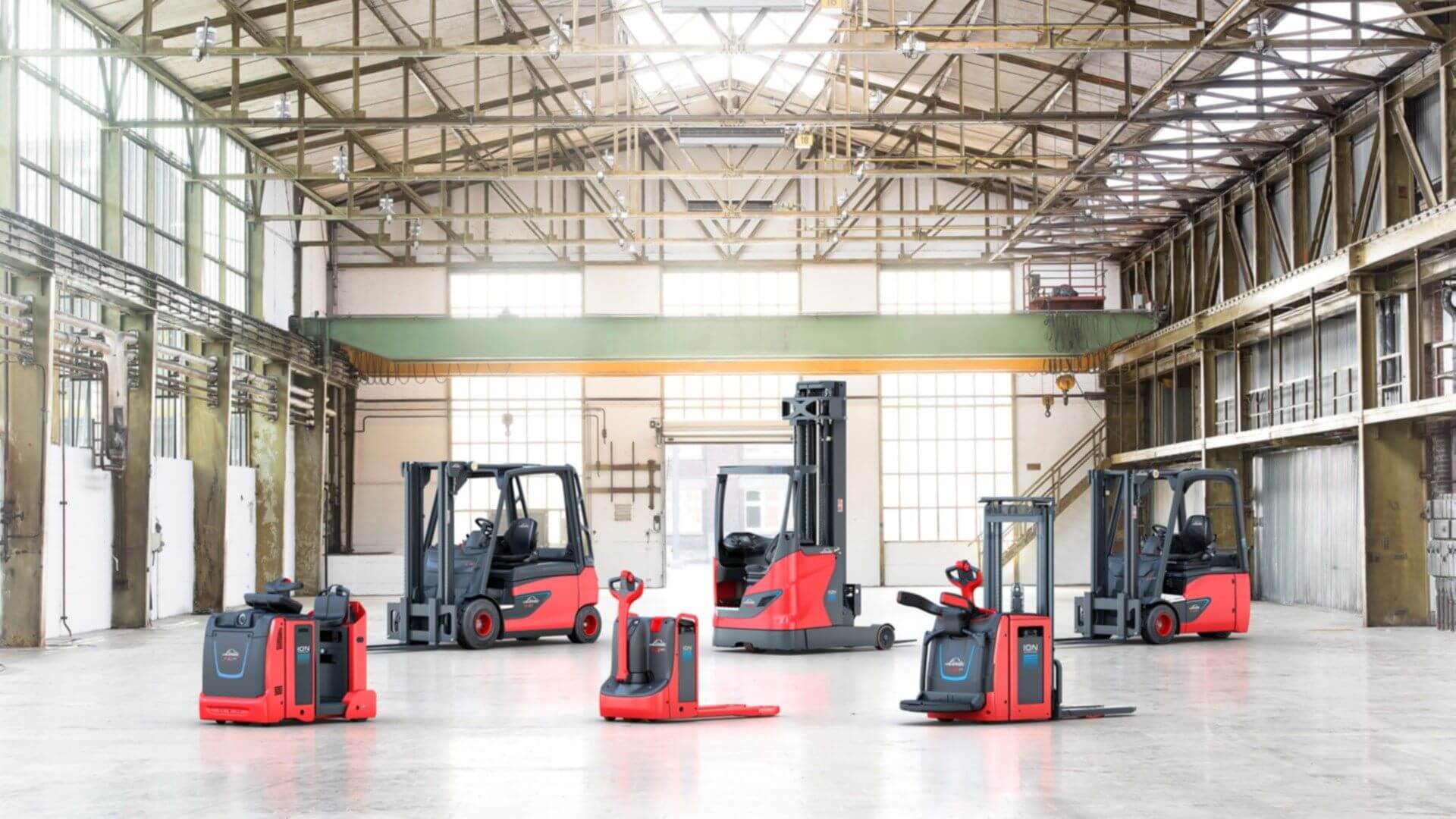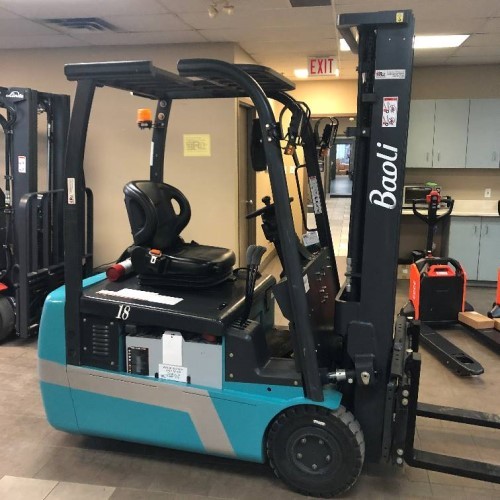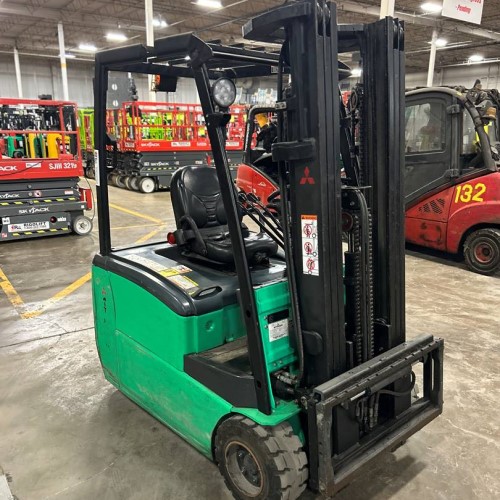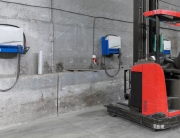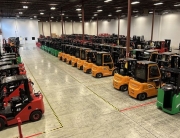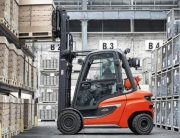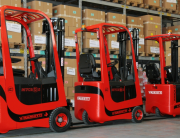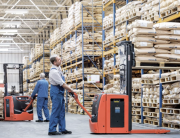In the fast-paced world of material handling, a reliable forklift is essential for keeping your operations running smoothly. But just like any machine, forklifts have a finite lifespan. Understanding Forklift Useful Life is crucial for businesses to maximize their productivity and avoid costly surprises. This comprehensive guide from Ri-Go Lift Truck will delve into the key factors that influence a forklift’s lifespan, along with practical tips to extend its useful life and ensure optimal performance for years to come.
- What Is the Life Expectancy of a Forklift?
- What Are Low and High Hours for a Forklift?
- Key Factors That Influence Forklift Useful Life: Optimizing Performance and Longevity
- Forklift Useful Life vs. Forklift Economic Life: Making Informed Decisions
- Electric Forklift Useful Life vs. IC Forklift Useful Life: Is There a Difference?
- Warning Signs: Is Your Forklift Nearing the End of Its Economic Life?
- Extending Your Return on Investment: Strategies for Long-Lasting Forklift Performance
- How to Get Rid of Your Old Forklift: Responsible Disposal Options
- Summary of the Key Takeaways
Keeping your forklifts operating efficiently and safely throughout their lifespan is crucial for a smooth-running operation. By understanding forklift useful life, implementing preventative maintenance practices, and making informed decisions about replacements, you can maximize your return on investment and ensure optimal performance in your material handling operations. Contact Ri-Go Lift today to discuss your forklift needs and explore how our expertise can help you achieve optimal performance and value from your forklift fleet.
Forklift Useful Life
1. What Is the Life Expectancy of a Forklift?
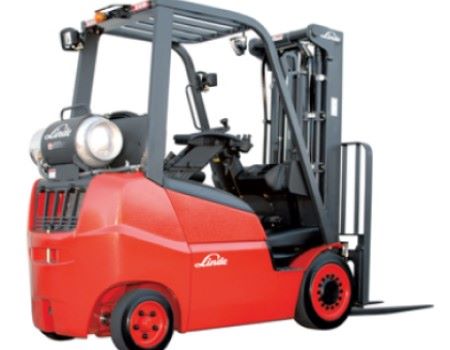
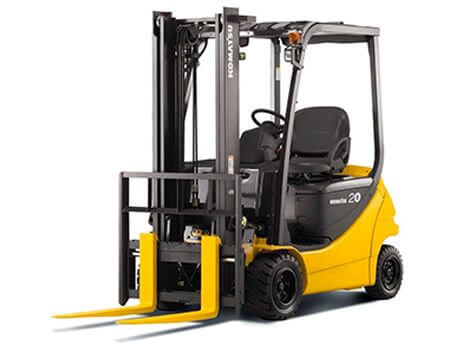
A variety of factors can affect your forklift’s useful life
Ever wondered how long your trusty forklift will faithfully serve your material handling needs? The answer, like most things in life, isn’t a simple one-size-fits-all. A forklift’s life expectancy hinges on a variety of factors, but a good starting point is understanding Forklift Useful Life. This refers to the period during which a forklift can operate efficiently and cost-effectively, meeting the demands of your specific operation.
While manufacturers provide general lifespan estimates for their models (typically around 10,000 hours of operation), real-world usage patterns can significantly impact how long your forklift remains a valuable asset.
How to Read Forklift’s Hours
Almost all forklifts are equipped with an hour meter to track how many hours the engine has been running. There are two main types of hour meters you might encounter:
Digital Hour Meter:
This is the most common type on modern forklifts. It will display the total number of hours in a clear, digital format, often with an LCD screen. The readout might show whole hours (e.g., 1254 hours) or tenths of hours (e.g., 1254.5 hours).
Analog Hour Meter:
On older forklifts, you might find an analog hour meter that resembles a car odometer. It will have dials with numbers that rotate as the forklift accumulates hours. These meters typically track whole hours only.
Locating the Hour Meter:
The hour meter is usually positioned on the instrument panel of the forklift, within the operator’s cabin. It might be directly in front of the operator or on a side panel near the steering wheel. Consult your forklift’s owner’s manual for the exact location if you have difficulty finding it.
Important Note about Hour Meters:
Some hour meters, particularly older analog models, have a limited number of digits they can display (often 4 digits). Once the forklift reaches the maximum reading (e.g., 9999 hours), the meter might reset to zero. This can be misleading if you don’t have maintenance records to track the total hours accumulated.
If you’re unsure about the total hours on a forklift with a potentially reset meter, consult the maintenance records or contact the previous owner (if possible) to get a more accurate picture of the forklift’s usage history.
In the next section, we’ll explore the key factors that influence forklift useful life and how you can maximize your investment through proper care and maintenance.
2. What Are Low and High Hours for a Forklift
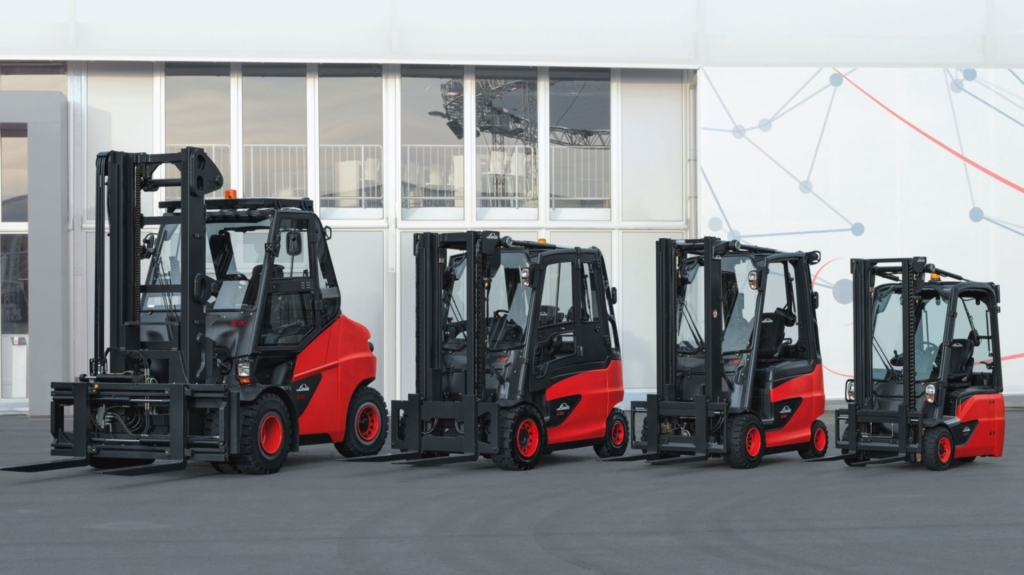
Electric forklifts usually have a longer forklift useful life than IC forklifts.
Defining “low” and “high” hours for a forklift depends on a few factors, but here’s a general guideline:
Low Hours:
Generally, anything less than 5,000 hours is considered low for a forklift. Forklifts with low hours are typically newer models with minimal wear and tear.
High Hours:
Anything exceeding 10,000 hours is often considered high hours for a forklift. However, this can vary depending on the brand, model, and how well the forklift has been maintained. Forklifts with exceptionally high hours may require more frequent repairs and maintenance.
Important Considerations:
Forklift Type:
Electric forklifts generally have a longer lifespan than internal combustion (IC) engine forklifts. So, a higher number of hours might be acceptable for an electric model compared to an IC forklift. However, the number of shifts per day, charging cycles, and whether the battery is lead-acid or lithium may affect the lifespan of electric counterbalanced forklifts.
Maintenance History: A well-maintained forklift, regardless of total hours, will likely be in better condition than a poorly maintained one with fewer hours. Regular maintenance significantly extends a forklift’s lifespan.
Brand and Model:
Some forklift brands are known for their exceptional durability. Consult with a forklift specialist or research the specific model you’re considering to understand its typical lifespan expectancy.
Here’s a breakdown to give you a better idea:
- Under 2,000 hours: This is an ideal range for a near-new forklift.
- 2,000-5,000 hours: This is still considered a low range for a well-maintained forklift.
- 5,000-10,000 hours: This is an average range, and the condition of the forklift will depend heavily on maintenance history.
- 10,000-15,000 hours: This is a high range for an IC forklift and might be approaching the end of its economic life. For a well-maintained electric forklift, this range might still be acceptable.
- Over 15,000 hours: This is very high for most forklifts and likely nearing the end of its useful life, regardless of type.
Remember: The number of hours is just one factor to consider when evaluating a forklift. Always prioritize a thorough inspection and consider the forklift’s overall condition, maintenance records, and brand reputation before making a purchase decision. Call Ri-Go Lift Truck at 416-213-7277 and we will help you to analyze your fleet and provide you with the best action plan to keep you fleet in the best shape.
3. Key Factors That Influence Forklift Useful Life: Optimizing Performance and Longevity
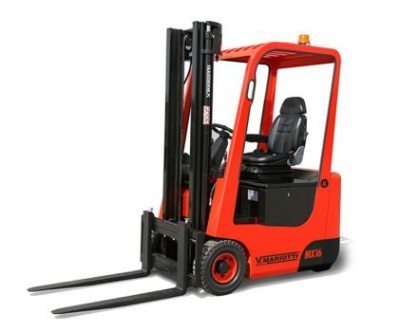
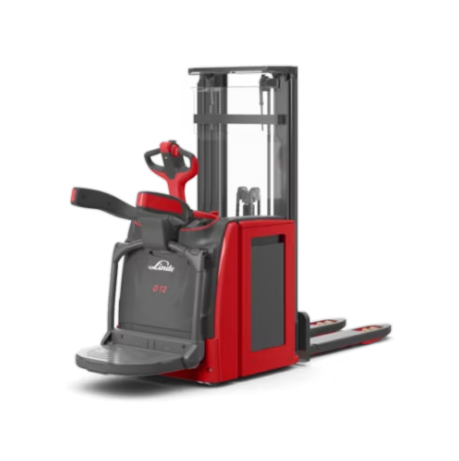
The more hours your forklift has been used, the more wear and tear on its components.
Just like an athlete’s peak performance depends on various training and lifestyle choices, a forklift’s lifespan hinges on a multitude of factors. Here’s a breakdown of the key influences on your forklift’s useful life, along with actionable tips to extend it:
a) Hours of Operation:
Forklift usage is typically measured in hours. The more hours a forklift operates, the greater the wear and tear on its components.
Extending Lifespan:
Implement a strategic scheduling system to distribute operating hours across multiple forklifts in your fleet. Consider preventive maintenance schedules and prioritize tasks for forklifts with lower operating hours.
b) Application and Environment:
The kind of work your forklift performs and the environment it operates in significantly impact its lifespan. Harsh environments with extreme temperatures, dust, or moisture can accelerate wear and tear.
Extending Lifespan:
Match the forklift’s capacity and features to the specific demands of your operation. For dusty areas, choose a forklift with a sealed cabin and extra filtration systems such as high-mounted air filter to minimize dust infiltration into the engine and other components. When possible, operate forklifts in controlled environments to reduce exposure to extreme temperatures and moisture.
c) Operator Behavior:
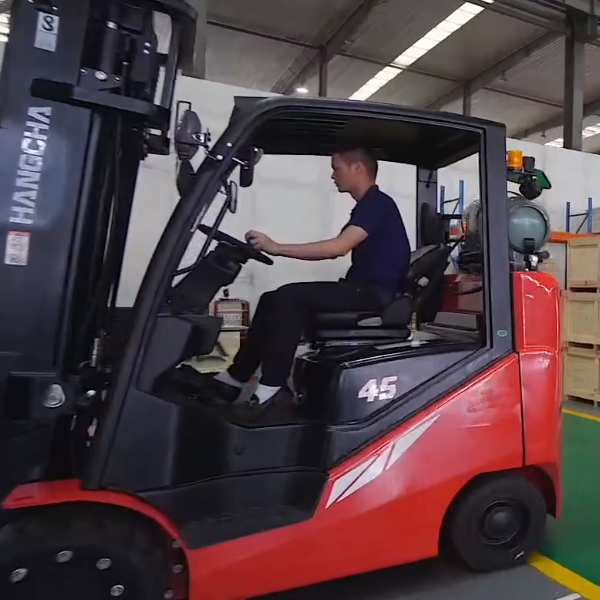
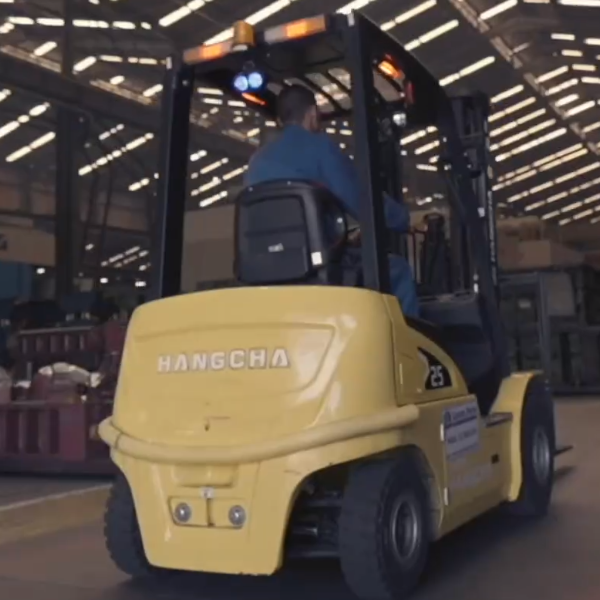
Make sure your operators are properly trained.
The following are some operator driving habits that could decrease your forklift’s lifespan:
- Rough operation and improper maneuvering can significantly shorten a forklift’s lifespan.
- Aggressive acceleration, harsh braking, and rapid turns put undue stress on the engine, transmission, and tires.
- Overloading a forklift can strain the lifting mechanism and compromise stability.
Providing your operators with proper training can help show them how to properly operate a forklift and extend its lifespan.
Extending Lifespan:
Invest in comprehensive operator training programs that emphasize safe and efficient operation practices. Here are some best practices to promote:
- Smooth operation: Encourage smooth starts, stops, and turns to minimize wear and tear on the drivetrain.
- Proper lifting techniques: Train operators on proper load centering, lifting techniques, and safe travel speeds with loads.
- Capacity awareness: Reinforce the importance of adhering to the forklift’s rated capacity to avoid overloading. Please be advised that in case of any changes in attachment, a new capacity plate should be ordered through an authorized dealer.
- Pre-shift inspections: Encourage operators to perform quick visual inspections before each shift, checking for leaks, damage, and proper tire pressure.
These best practices can significantly improve your forklift’s useful life.
d) Maintenance Practices:
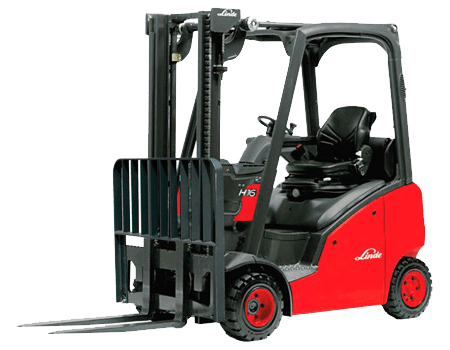
Conduct pre-shift inspections to catch small problems before they become larger ones.
Regular and thorough maintenance is paramount to extending a forklift’s useful life. Following the manufacturer’s recommended maintenance schedule helps address minor issues before they snowball into major repairs.
Extending Lifespan:
Implement a preventative maintenance program that includes:
Regular Inspections:
Conduct daily visual inspections for leaks, loose parts, and damage. Schedule regular, more comprehensive inspections by qualified technicians following the manufacturer’s recommended intervals.
Lubrication:
Proper lubrication according to the manufacturer’s guidelines is essential for reducing friction and wear on moving parts.
Replacement of Worn Parts:
Don’t wait for parts to fail completely. Proactive replacement of filters, fluids, and worn components based on the maintenance schedule helps prevent more significant breakdowns.
e) Fuel Type and Quality:
The type of fuel used (electric, gas, propane) and its quality can impact engine performance and longevity. Using low-quality fuel can lead to incomplete combustion, engine deposits, and reduced power.
Extending Lifespan:
Always use high-quality fuel recommended by the manufacturer for your specific forklift model. Perform regular fuel system maintenance, including filter replacements, to ensure clean fuel delivery to the engine.
By understanding these key factors and implementing these best practices, you can significantly extend your forklift’s useful life, maximize your return on investment, and ensure optimal performance for years to come.
4. Forklift Useful Life vs. Forklift Economic Life: Making Informed Decisions
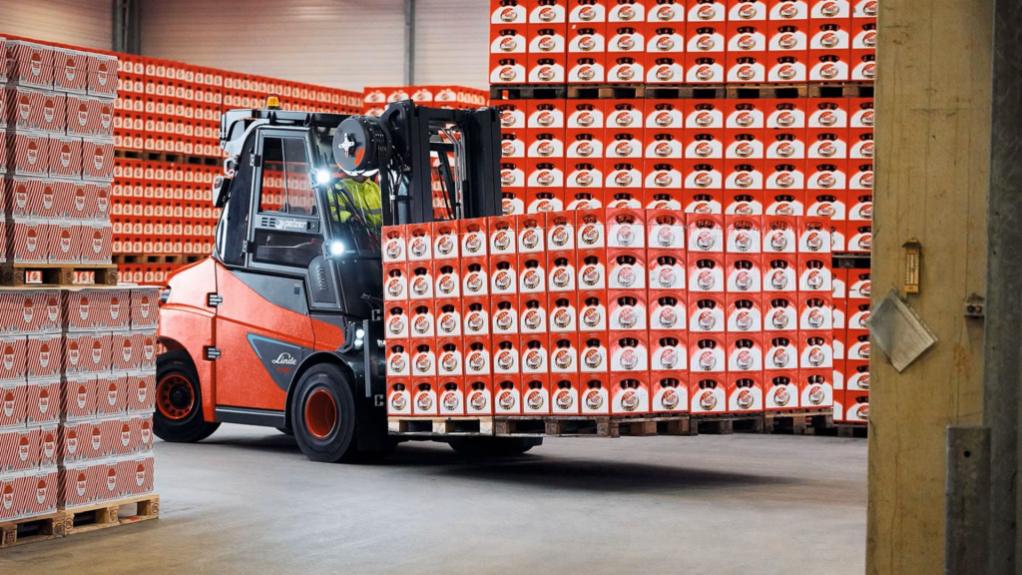
Older forklifts with worn parts pose a higher safety risk.
While we’ve established that forklift useful life refers to the overall operational lifespan of a forklift, there’s another critical concept to understand: forklift economic life.
This term focuses on the financially sensible period to keep a forklift operational. In simpler terms, it’s the point at which keeping and maintaining an older forklift becomes more expensive than investing in a new one.
Why is the Difference Important?
Many businesses mistakenly focus solely on a forklift’s useful life. They keep operating a forklift as long as it runs, neglecting the rising maintenance costs associated with an aging machine. Here’s why understanding the distinction between these two terms is crucial:
Cost Control:
Forklifts, like any machinery, become less efficient and require more frequent repairs as they age. Focusing solely on useful life can lead to unnecessary expenses on maintaining an older forklift that may be costing you more in repairs than its operational benefit.
Safety Concerns:
Older forklifts with worn components pose a higher safety risk to operators and those around them. By understanding the economic life, you can strategically replace a forklift before safety becomes compromised.
Productivity Optimization:
Newer forklifts often boast improved features and technology that enhance efficiency and productivity. Sticking with an older model past its economic life can hinder your overall operational efficiency. Using a well-shaped forklift helps businesses to run their operations more smoothly by minimizing down time and increasing productivity.
Making the Right Call:
Knowing the difference between useful life and economic life empowers you to make informed decisions about your forklift fleet. There are resources available, such as economic life calculators from forklift manufacturers or preventative maintenance agreement, that can help you keep your material handling fleet in the best shape and determine the optimal time to replace a forklift.
In the next section, we’ll explore some of the signs that might indicate your forklift is nearing the end of its economic life.
5. Electric Forklift Useful Life vs. IC Forklift Useful Life: Is There a Difference?
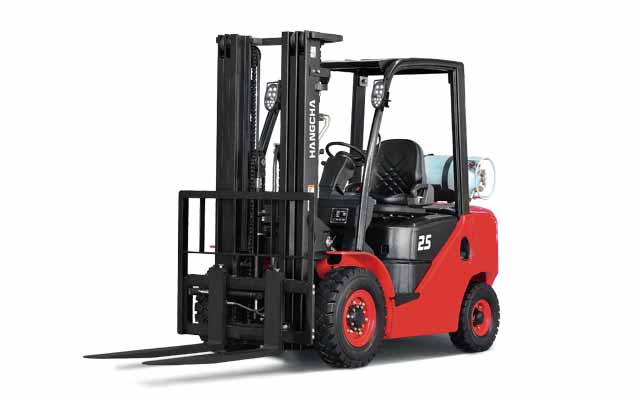
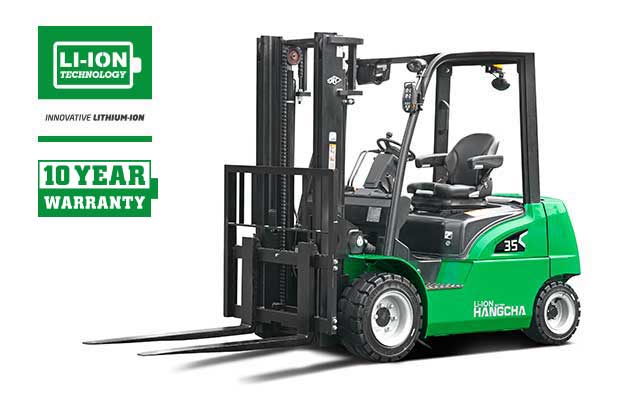
The type of power your forklift uses will also affect its lifespan.
In the world of forklifts, two main power sources dominate: internal combustion (IC) engines powered by gas, propane, or diesel, and electric motors powered by batteries. While both can be reliable workhorses, a critical question arises: Does the type of power source influence a forklift’s useful life?
The answer is yes, there can be some key differences in the useful life expectancy of electric and IC forklifts. Here’s a breakdown of the factors at play:
Electric Forklifts:
Advantages: Electric forklifts generally boast a longer useful life compared to IC models. This is due to several factors:
Fewer Moving Parts:
Electric forklifts have simpler drivetrains with fewer moving parts compared to IC engines. This translates to less wear and tear, reducing the need for major repairs.
Cleaner Operation:
Electric motors don’t involve combustion, eliminating wear caused by burning fuel and engine byproducts.
Reduced Stress:
Watch the above video to learn how an electric motor works.
Electric forklifts typically experience less stress on their drivetrains due to smoother acceleration and lower operating temperatures.
Disadvantages: While electric forklifts offer a longer lifespan, they do have limitations to consider:
Battery Degradation:
Over time, forklift batteries lose capacity, requiring replacement. Battery lifespan can vary depending on usage patterns and maintenance practices. For 2+ shift applications, batteries needs to be replaced more frequently because they reach the limit of charging cycles earlier compared to 1 shift applications.
Charging Requirements:
Electric forklifts require downtime for recharging, which can impact productivity in high-demand operations. To avoid this, you can purchase lithium-ion powered electric forklifts that offer faster charging speeds and opportunity charging so you can keep your forklift charged throughout consecutive shifts.
IC Forklifts:
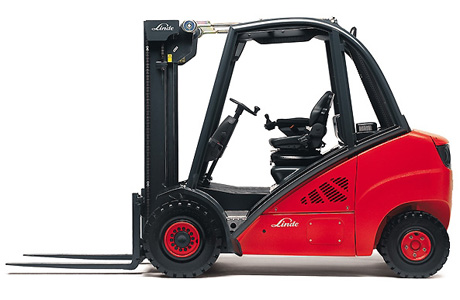
IC forklifts are sometimes more powerful than electric.
Advantages: While electric forklifts generally lead in lifespan, IC forklifts offer some advantages:
Fuel Availability:
Refueling an IC forklift is typically faster than recharging an electric model, minimizing downtime in fast-paced environments.
Power and Performance:
IC engines often provide more power than electric motors, making them better suited for heavy-duty applications. However, as lithium-ion technology is improving, there are now many electric forklifts that can compete with their IC counterparts for power.
Disadvantages: IC forklifts tend to have shorter useful lives compared to electric models due to several factors:
More Moving Parts:
Complex IC engines have more components prone to wear and tear, leading to a higher frequency of repairs.
Operating Environment:
Combustion generates heat and engine byproducts that can contribute to wear and tear on internal components.
The Bottom Line:
Electric forklifts generally offer a longer useful life due to their simpler design and cleaner operation. However, IC forklifts might be more suitable for specific applications due to their power and faster refueling times.
Ultimately, the best choice for your operation depends on your specific needs, usage patterns, and budget. Consider factors like the types of loads you handle, operating environment, and downtime tolerance when selecting the most suitable forklift type for your long-term needs.
6. Warning Signs: Is Your Forklift Nearing the End of Its Economic Life?
If you notice that your forklift needs repairs frequently, then it may be time to replace it.
Now that you understand the critical distinction between forklift useful life and economic life, it’s important to be able to identify signs that might indicate your forklift is nearing the end of its economically viable lifespan. Here are some key indicators to watch for:
Increased Repair Frequency:
As your forklift ages, the frequency of repairs and maintenance needs will inevitably rise. If your maintenance costs are steadily climbing, it might be a sign that repairs on an older model are becoming less cost-effective.
Decreased Performance:
Older forklifts may experience a decline in performance, such as the following:
- Reduced lifting capacity
- Slower speeds
- Increased fuel consumption
This can negatively impact your overall productivity and operational efficiency.
Safety Concerns:
Regular wear and tear can compromise the safety features of a forklift. If you notice issues like worn brakes, sluggish steering, or malfunctions in lifting mechanisms, it might be time to consider replacing the forklift before a safety incident occurs.
Parts Availability:
Forklift manufacturers may eventually stop producing replacement parts for older models. If sourcing parts becomes difficult or expensive, it can significantly hinder your ability to maintain the forklift and keep it operational. As an authorized dealer, we are committed to supply spare parts from reliable sources in order to guarantee your operation continuity.
Technological Advancements:
The forklift industry is constantly evolving, with newer models featuring advanced technologies that improve:
- Efficiency
- Safety
- Operator comfort
If your older forklift lacks these advancements, it might be falling behind your competitors and hindering your overall operation.
By recognizing these warning signs, you can proactively assess the economic viability of your forklift fleet. In the next section, we’ll explore some strategies to maximize the return on investment for your forklifts.
7. Extending Your Return on Investment: Strategies for Long-Lasting Forklift Performance
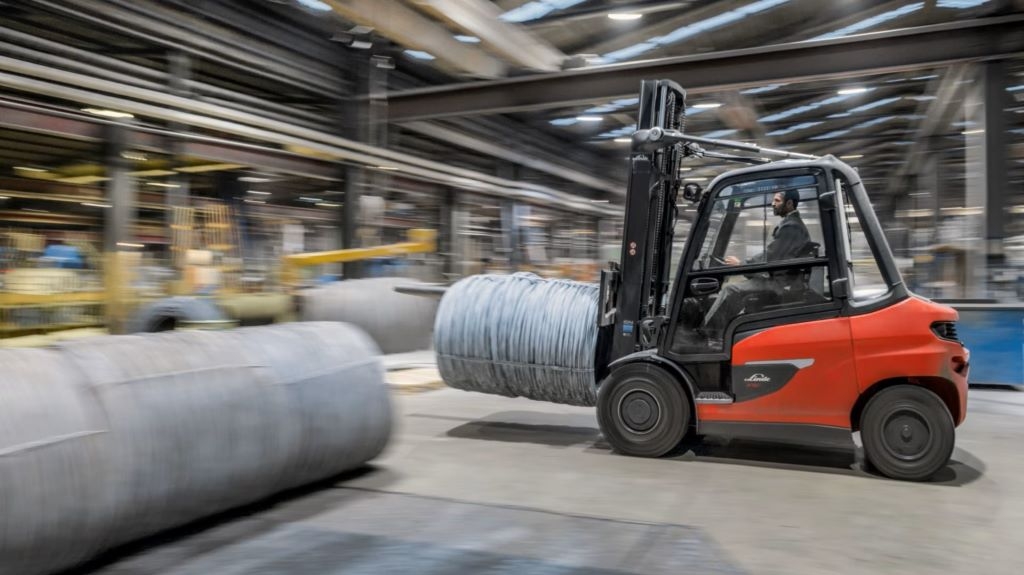
Take a proactive approach to maintaining your forklift by following recommended preventative maintenance guidelines.
Understanding forklift useful and economic life is crucial, but it’s only part of the equation. The real goal is to maximize the return on investment (ROI) for your forklifts. Here are some key strategies to ensure your forklifts deliver peak performance and value throughout their lifespan:
Invest in Preventative Maintenance:
As highlighted earlier, a well-maintained forklift is a reliable and cost-effective forklift. Implement a preventative maintenance program that adheres to the manufacturer’s recommendations. This proactive approach helps catch minor issues before they snowball into major repairs, saving you money in the long run.
Train Your Operators:
Skilled operators are essential for safe and efficient forklift operation. Proper training minimizes wear and tear caused by rough handling practices and overloading. In addition to safety protocols, train operators on proper inspection techniques to identify potential problems early on.
Choose the Right Forklift for the Job:
Matching the forklift’s capacity and features to the specific demands of your operation is crucial. Don’t compromise by using a forklift that’s constantly overloaded or underutilized. Consult with a qualified forklift specialist to ensure you’re selecting the most appropriate equipment for your needs.
Track and Analyze Usage Data:
Monitoring forklift usage data (hours of operation, types of loads handled, etc.) can provide valuable insights. This data can help you optimize scheduling to distribute wear and tear across your fleet and identify potential inefficiencies in operation.
Consider Alternative Ownership models:
For some businesses, purchasing a new forklift might not be the most economical option. Explore alternative ownership models such as leasing or renting, which can provide access to newer, more efficient forklifts without a significant upfront investment. At Ri-Go Lift Truck we offer a tailored finance solution to fit your needs in the best way.
By implementing these strategies, you can significantly extend the lifespan and performance of your forklifts, maximizing your return on investment and ensuring a smooth-running material handling operation.
8. How to Get Rid of Your Old Forklift: Responsible Disposal Options

Trade in your old forklift to get credit towards a new purchase.
As you navigate the lifecycle of your forklift fleet, there eventually comes a time to consider replacing an aging model. But what do you do with your old forklift? Here, Ri-Go Lift offers some responsible disposal options to consider:
a) Trade-In:
Benefits: Trading in your old forklift for a new one from a dealer can be a convenient and cost-effective option. You’ll receive a credit for the trade-in value, reducing the upfront cost of your new forklift.
Considerations: The trade-in value will depend on the condition, age, and model of your forklift.
b) Sell to a Private Party:
Benefits: Selling your forklift directly to a private party can potentially fetch you a higher price than a trade-in. Online marketplaces and industry publications can be good avenues to reach potential buyers.
Considerations: Selling privately requires time and effort to advertise and negotiate with buyers. You’ll also be responsible for ensuring the forklift is in a safe and operational condition before the sale.
c) Auction:
Benefits: Forklift auctions can be a quick way to sell your forklift, particularly for older models. The auction format allows for competitive bidding, potentially leading to a higher sale price than a direct sale.
Considerations: Auction fees and commissions can eat into your profits. The final sale price can be unpredictable depending on auction participation and market demand.
d) Scrap Metal Recycling:
Benefits: If your forklift is beyond economical repair, scrapping it for its metal components can be an eco-friendly option. Recycling facilities pay based on the weight of the metal.
Considerations: Scrap metal prices fluctuate, so the return you receive might be minimal. You’ll need to find a reputable scrap metal recycling facility that accepts forklifts.
e) Forklift Removal Services:
Benefits: Some companies specialize in forklift removal services. They handle the entire process, including pick-up, transportation, and responsible disposal. This can be a convenient option if you lack the time or resources to manage the disposal process yourself.
Considerations: Forklift removal services typically charge fees for their services. Research different providers to compare pricing and disposal methods.
The Best Choice for You:
The most suitable disposal option for your old forklift depends on its condition, your budget, and your time constraints. Consider consulting with a forklift specialist at Ri-Go Lift to discuss your specific situation and explore the most beneficial option for your needs.
9. Summary of the Key Takeaways
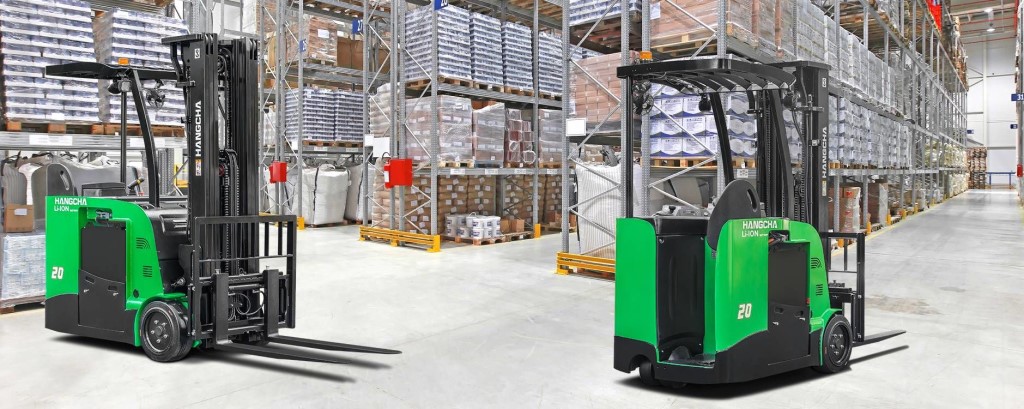
Consult a forklift professional, if you need help deciding if it is time to replace your forklift.
This article delved into the concept of forklift useful life, which is the period a forklift can operate efficiently and cost-effectively. It’s crucial to distinguish this from forklift economic life, which considers the point where keeping an older forklift becomes more expensive than replacing it.
Here’s a summary of the key takeaways:
- Factors Affecting Useful Life: Hours of operation, application/environment, operator behavior, maintenance practices, and fuel type/quality all significantly impact a forklift’s lifespan.
- Extending Lifespan: Implementing preventative maintenance programs, proper operator training, and choosing the right forklift for the job can significantly extend its lifespan.
- Warning Signs for Replacement: Increased repair frequency, decreased performance, safety concerns, parts availability issues, and technological advancements can indicate it’s time to consider replacing your forklift.
- Maximizing ROI: Strategies like preventative maintenance, operator training, and tracking usage data can help you maximize the return on investment for your forklifts.
- Disposal Options: When replacing a forklift, consider responsible disposal options like trade-ins, private sales, auctions, scrap metal recycling, or forklift removal services.
- Electric vs. IC Forklifts: Electric forklifts generally boast a longer lifespan due to fewer moving parts and cleaner operation. However, IC forklifts might be better suited for specific applications due to their power and faster refueling times.
Understanding these factors and implementing best practices will empower you to make informed decisions about your forklift fleet, ensuring optimal performance, safety, and return on investment throughout their operational lifespan.
Looking for a New Forklift? Contact Ri-Go
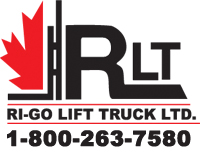
If you are in the market for a new forklift, contact us. Our knowledgeable staff can help you choose the perfect one for your needs.
Since 1977, Ri-Go Lift Truck has been serving customers in Ontario and Quebec with everything they need for material handling. We are committed to providing you with quality service and a high level of customer satisfaction.
We are your authorized dealer for the following top brands:
- Linde Lift Trucks, Power Pallet Trucks, Tow Tractors and Stackers
- Hangcha Forklifts Full Lineup of Electric & IC Equipment
- Blue Giant Lift Trucks and Pallet Movers
- Komatsu Forklifts and Reach Trucks
- Mariotti Lift Trucks – The Worlds Smallest Lift Truck
- Baoli Lift Trucks
- Advance Sweepers and Scrubbers
- Skyjack Genie Booms and Scissor Lifts

In addition to our authorized distributorships, we can also provide you with:
- Large selection of used forklifts
- Operator Training Department – open 7 days a week
- Parts Departments – over 1.4 million dollars of parts on hand for all makes and models
- Service Department – highly trained technicians
- Leasing and Rentals
No matter what your material handling needs are, we can help. Contact us today to let us know how we can be of service.
What Our Customers Think…
“I’ve been using RIGO Lift for the last 3-4 years now for my equipment rental needs. They have a fantastic crew working together and they are VERY efficient and reliable as a whole. Whenever I need electric equipment which is hard to come by, I know they are always able to provide. Their equipment is rare to breakdown because they provide machinery that is well kept and in good condition. I definitely recommend you reach out to Steve and the team because you will not be disappointed!”
Heloise Vieira



